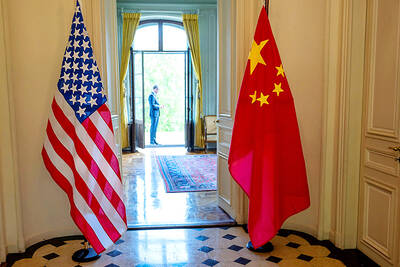Revenue in the global semiconductor market is forecast to increase 7.7 percent year-on-year to US$476 billion this year following a 5.4 percent increase last year, International Data Corp (IDC) said on Feb. 2.
The Framingham, Massachusetts-based research institute said the anticipated stronger growth this year reflects the effects of various COVID-19 vaccines being disseminated, with many economies beginning to open and recover gradually.
“The nature of the recovery will depend upon how quickly government stimulus plans stabilize the global macroeconomy and consumer confidence improves as vaccinations roll out around the world,” Mario Morales, a program vice president at IDC responsible for semiconductor market analysis, said in a statement.
Last year, the semiconductor industry experienced significant business volatility and uneven development in different segments within the industry due to the COVID-19 pandemic and subsequent measures taken to manage infections, including stay-at-home mandates, remote working, online education, travel restrictions and manufacturing shutdowns, the research institute said.
Despite the pandemic, the semiconductor market registered better-than-expected revenue of US$442 billion last year, thanks to the growth in cloud computing and demand for devices to support remote working and learning, it said.
The market for semiconductors in computing systems, such as PCs and servers, saw revenue outpace the overall semiconductor market, growing 10.9 percent year-on-year to US$152 billion last year, IDC said, projecting the revenue for this year to grow 6.3 percent to US$161 billion.
Smartphones were the second-largest demand driver for the semiconductor market last year on the back of accelerated growth in 5G phones, which demand higher-spec 5G semiconductors and more memory chips, sensors and radio frequency ICs, the research institute said, projecting mobile phone semiconductor revenue would grow 11.4 percent to US$128 billion this year after 3 percent growth last year.
However, the automotive and industrial semiconductor segments were significantly impacted by the pandemic last year, resulting in sales disruption and manufacturing disruptions, while trade policy impacted supply chains throughout the year, the IDC said.
While semiconductor content growth in vehicles continues to outpace vehicle unit sales growth due to more semiconductors being used to enable electrification, infotainment and connectivity, as well as advanced driver assistance systems, revenue in the automotive semiconductor sector decreased 8.4 percent to US$37 billion last year, and the segment’s recovery this year would depend on the rate of vaccinations and how effective the vaccinations are, it said.
IDC forecast that non-memory automotive semiconductor revenue would grow 12.6 percent this year.
“There are specific markets that remain on an upward trajectory and are essential to the recovery this year, including 5G, cloud, intelligent edge, and the dedicated foundry industry,” Morales said. “The first half of the year will also see some inventory digestion in the enterprise, cloud, and telco equipment market, but we do not expect it to derail the growth for the year.”
“Semiconductor technology remains critical across every industry on our journey to a sustainable recovery,” he said.

Real estate agent and property developer JSL Construction & Development Co (愛山林) led the average compensation rankings among companies listed on the Taiwan Stock Exchange (TWSE) last year, while contract chipmaker Taiwan Semiconductor Manufacturing Co (TSMC, 台積電) finished 14th. JSL Construction paid its employees total average compensation of NT$4.78 million (US$159,701), down 13.5 percent from a year earlier, but still ahead of the most profitable listed tech giants, including TSMC, TWSE data showed. Last year, the average compensation (which includes salary, overtime, bonuses and allowances) paid by TSMC rose 21.6 percent to reach about NT$3.33 million, lifting its ranking by 10 notches

Popular vape brands such as Geek Bar might get more expensive in the US — if you can find them at all. Shipments of vapes from China to the US ground to a near halt last month from a year ago, official data showed, hit by US President Donald Trump’s tariffs and a crackdown on unauthorized e-cigarettes in the world’s biggest market for smoking alternatives. That includes Geek Bar, a brand of flavored vapes that is not authorized to sell in the US, but which had been widely available due to porous import controls. One retailer, who asked not to be named, because

SEASONAL WEAKNESS: The combined revenue of the top 10 foundries fell 5.4%, but rush orders and China’s subsidies partially offset slowing demand Taiwan Semiconductor Manufacturing Co (TSMC, 台積電) further solidified its dominance in the global wafer foundry business in the first quarter of this year, remaining far ahead of its closest rival, Samsung Electronics Co, TrendForce Corp (集邦科技) said yesterday. TSMC posted US$25.52 billion in sales in the January-to-March period, down 5 percent from the previous quarter, but its market share rose from 67.1 percent the previous quarter to 67.6 percent, TrendForce said in a report. While smartphone-related wafer shipments declined in the first quarter due to seasonal factors, solid demand for artificial intelligence (AI) and high-performance computing (HPC) devices and urgent TV-related orders

MINERAL DIPLOMACY: The Chinese commerce ministry said it approved applications for the export of rare earths in a move that could help ease US-China trade tensions Chinese Vice Premier He Lifeng (何立峰) is today to meet a US delegation for talks in the UK, Beijing announced on Saturday amid a fragile truce in the trade dispute between the two powers. He is to visit the UK from yesterday to Friday at the invitation of the British government, the Chinese Ministry of Foreign Affairs said in a statement. He and US representatives are to cochair the first meeting of the US-China economic and trade consultation mechanism, it said. US President Donald Trump on Friday announced that a new round of trade talks with China would start in London beginning today,